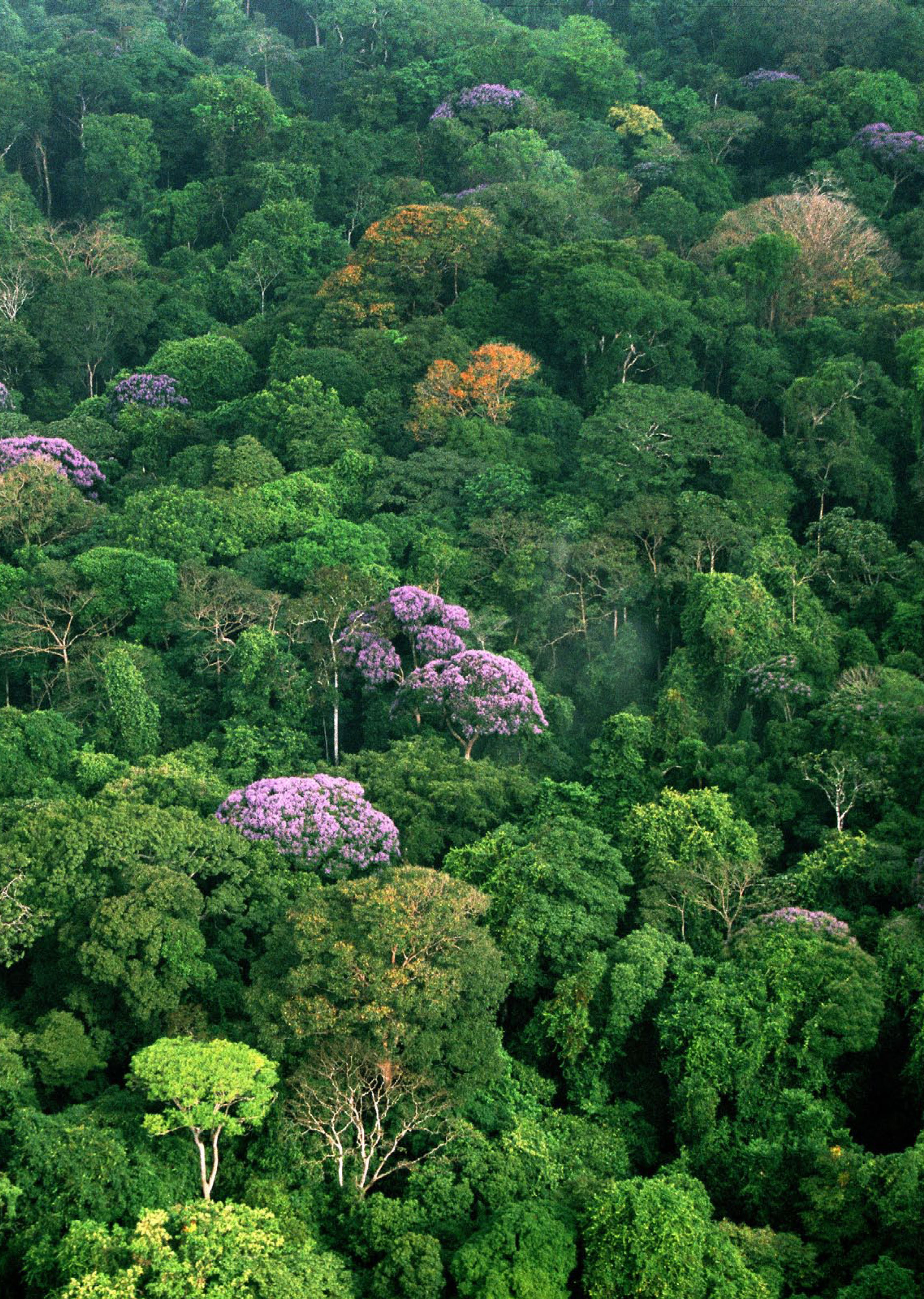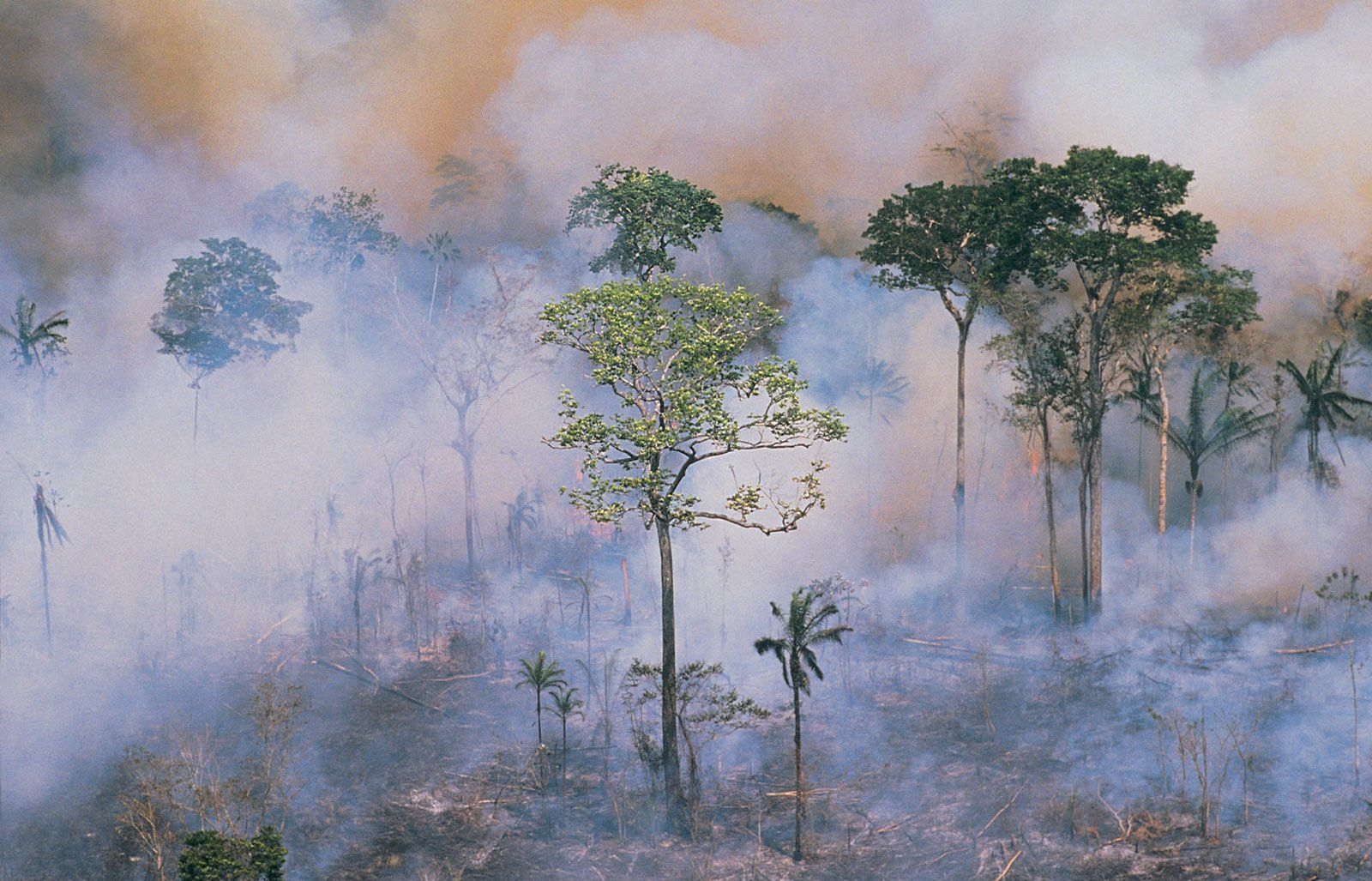The tropical forest canopy, often described as the vibrant green ceiling of Earth’s most biodiverse ecosystems, plays a crucial role in maintaining the planet’s health. This upper layer of tree tops not only shelters countless species but also serves as a significant carbon sink, aiding in carbon sequestration and helping mitigate climate change. Recent advancements in technology, such as NASA’s Global Ecosystem Dynamics Investigation (GEDI), have allowed scientists to monitor changes in canopy height and forest health with unprecedented precision. These insights are essential for understanding the impacts of climate change on these vital ecosystems, particularly as prolonged dry seasons threaten the stability of tropical forests across Asia, Africa, and South America. As we strive to protect our planet’s lungs, prioritizing the preservation of these incredible canopies is more important than ever.
The upper layer of forests, often referred to as the tree crown layer or canopy layer, is a dynamic environment critical to the ecosystem’s overall balance. This region not only houses diverse flora and fauna but is also instrumental in carbon sequestration, making it a focal point in the fight against climate change. Utilizing sophisticated NASA technologies, researchers have been able to map and assess variations in canopy height, providing vital data on forest health. The importance of understanding these vertical structures cannot be overstated, especially as they relate to forest productivity and resilience in the face of climate challenges. Studying these canopy systems helps reveal the intricate relationships between environmental conditions and forest dynamics.
Understanding the Importance of Tropical Forest Canopy
The tropical forest canopy serves as a crucial element in the health of our planet’s ecosystems. It represents the upper layer formed by mature trees, providing habitat for numerous species while playing an essential role in carbon sequestration. As these canopies flourish, they effectively absorb carbon dioxide from the atmosphere, helping to mitigate climate change. In studying the forest canopy’s height, researchers can gain insight into the overall health and productivity of these forests, which are essential in the fight against global warming.
However, climate change poses significant challenges to these tropical forest canopies. Factors such as prolonged dry seasons and heightened temperatures are leading to variations in canopy height across different regions. A study using NASA’s GEDI technology has shown that environmental drivers, including climate and topography, heavily influence canopy characteristics. As researchers strive to understand these dynamics, it becomes clear that safeguarding tropical forests is pivotal not only for biodiversity but also for maintaining the planet’s respiratory balance.
NASA GEDI: A Technological Breakthrough for Forest Monitoring
NASA’s Global Ecosystem Dynamics Investigation (GEDI) brings a revolutionary approach to understanding tropical forests through advanced laser technology. Installed on the International Space Station, GEDI utilizes LiDAR to perform detailed assessments of forest canopy height. This innovative method allows scientists to gather data that significantly expands upon traditional terrestrial measurements, identifying how forest health is affected by climatic factors. For example, the height of the canopy serves as a primary indicator of biomass and carbon storage capabilities — key metrics in assessing a forest’s resilience to climate change.
The insights gathered from GEDI highlight the vulnerability of certain regions, such as the southern Amazon, where increased drought conditions threaten to diminish canopy height. By providing a deeper understanding of how these variabilities occur, GEDI assists researchers and policymakers alike in developing effective strategies for conservation. The findings emphasize the importance of continued monitoring, as the information obtained can inform carbon management practices and enhance global efforts toward reducing greenhouse gas emissions.
The Link Between Canopy Height and Forest Health
Research indicates that canopy height is directly related to the overall health of tropical forests. Taller canopies are often associated with greater biomass and increased carbon storage, thus highlighting their role in combating climate change. The interplay between climatic conditions and ecological factors dictates not only the growth patterns but also the sustainability of these vital ecosystems. As studies utilizing advanced technologies like GEDI show, understanding these dynamics is crucial for evaluating the conservation value of tropical forests.
The findings suggest that environmental factors such as soil properties, elevation, and seasonal variations heavily impact canopy height. For instance, it has been revealed that moisture levels and dry season length significantly affect regions like the central Amazon, leading to tailored conservation strategies across varying ecosystems. With a deeper comprehension of these relationships, researchers can better predict the response of forest canopies to climate change, emphasizing the need for tailored conservation measures that uphold forest health and ensure ecosystem resilience.
Climate Change’s Threat to Tropical Forest Canopies
The ongoing threat of climate change presents unparalleled challenges to the stability of tropical forest canopies worldwide. Increased temperatures and unpredictable precipitation patterns directly impact the growth and vitality of these canopies, ultimately jeopardizing biodiversity and carbon storage functions that they perform. Researchers studying the southern Amazon have detected alarming trends related to longer dry seasons, which lead to progressively lower canopy heights. This deterioration signals a potential tipping point in forest health and suggests a devastating loss of ecological and carbon sequestration capabilities.
Furthermore, the variability in how climate change manifests across different regions complicates the issue. For example, while certain areas may face drought, others may experience excess rainfall. Understanding these locality-specific challenges is critical for policymakers seeking to implement effective climate action strategies. The necessity of immediate and targeted conservation efforts cannot be understated; as the study underlines, protecting tropical forest habitats is integral to both maintaining biodiversity and mitigating the broader impacts of climate change.
The Role of Canopy Height in Carbon Sequestration
Canopy height serves as a significant indicator of a forest’s capacity for carbon sequestration. Taller canopies often correlate with a greater volume of biomass, facilitating more efficient absorption of carbon dioxide from the atmosphere. This dynamic highlights the importance of preserving ecosystems capable of sustaining high canopy levels amidst the threats posed by climate change. With increased pressures from rising temperatures and altered precipitation patterns, maintaining these towering structures becomes even more crucial in achieving climate goals throughout the globe.
Studies show that understanding factors influencing canopy height can help inform strategies aimed at enhancing carbon storage in tropical forests. One such strategy involves prioritizing forest management practices that support taller canopy growth while minimizing disturbance from human activity. Additionally, researchers employing NASA’s GEDI technology are gaining a clearer picture of how various environmental factors, such as soil and topography, contribute to canopy development and health. This comprehensive approach can drive meaningful change, exemplifying the link between sustainable forest management and effective carbon sequestration.
Biodiversity Conservation in Tropical Forests
Tropical forests are renowned for their vast biodiversity, hosting a myriad of species that depend on the complex structure of the forest canopy. Conserving these habitats is not only crucial for species survival but also fortifies ecosystem resilience, a quality essential in an era marked by climate change. The upper layers of the forest play an instrumental role in providing habitats and food sources, making it critical to understand how external pressures influence these ecological dynamics.
As studies utilizing NASA’s GEDI technology reveal, the health and height of the tropical canopies directly correlate with biodiversity levels. Areas with robust, taller canopies tend to harbor a diverse range of flora and fauna, while those suffering from climate-induced deterioration may see reduced habitats and increased vulnerability of species. Therefore, a commitment to protecting and restoring tropical forests must be part of our comprehensive strategy against biodiversity loss, ensuring that these invaluable ecosystems can survive in the face of evolving challenges.
The Impact of Soil and Topography on Canopy Growth
Soil properties and topographical features present fundamental factors influencing the health and growth of tropical forest canopies. New research conducted by NASA has illustrated that soil quality, moisture levels, and terrain characteristics are vital considerations when studying canopy height variations. For example, forests located in valleys or on nutrient-rich soils often exhibit taller, more vigorous canopies, showcasing the interplay between environmental factors and vegetation health.
This understanding is critical for developing effective conservation strategies that are tailored to regional characteristics. By appreciating how these external conditions affect forest dynamics, conservationists can adopt practices that reinforce canopy growth and enhance forest resilience. As the pressures of climate change increase, integrating soil management and topographic assessment into conservation plans will be essential in safeguarding tropical forests, ensuring that they continue to function as critical carbon sinks and providers of biodiversity.
Future Directions in Tropical Forest Research
As the challenges posed by climate change mount, the future of tropical forest research will increasingly focus on understanding and predicting changes in canopy dynamics. Researchers aim to expand their studies beyond primary forests to encompass a broader spectrum of forest types worldwide. Enhanced monitoring and data collection will be paramount to inform global conservational efforts as we face a rapidly changing environment. Collaboration among scientists, policymakers, and local communities will be essential, fostering adaptive strategies that are responsive to the unique challenges presented by individual ecosystems.
Continued advancements in technology, such as NASA’s GEDI, will play an integral role in shaping future research directions. By providing precise measurements of canopy height and forest health, researchers can track changes over time and assess the impacts of conservation strategies. Ultimately, the goal is not only to enhance our understanding of tropical forests but also to influence policy. Protecting these vital ecosystems is essential not only for carbon storage and mitigating climate change but also for maintaining the diversity and richness of Earth’s flora and fauna.
Policy Recommendations for Tropical Forest Conservation
With mounting evidence highlighting the significance of tropical forests in the fight against climate change, urgent policy recommendations are required to ensure their protection and sustainability. Policymakers must prioritize the creation and enforcement of conservation initiatives aimed specifically at regions most vulnerable to climate impacts, such as the southern Amazon. By implementing targeted policies that promote forest health and resilience, governments can effectively mitigate the loss of canopy height and enhance carbon sequestration capabilities.
Additionally, fostering local and indigenous communities’ involvement in conservation practices will help ensure that management strategies are culturally adaptive and effective. Encouraging sustainable logging practices and responsible land use can balance economic development with environmental stewardship. Ultimately, a multi-faceted approach that integrates scientific research, community engagement, and legislative action will be vital in securing the future of tropical forests as vital ecological components essential for combating climate change.
Frequently Asked Questions
What role does the tropical forest canopy play in carbon sequestration?
The tropical forest canopy plays a crucial role in carbon sequestration as it acts as a significant storage area for carbon. Taller canopies are associated with higher carbon storage and greater above-ground biomass, which helps mitigate climate change by absorbing carbon from the atmosphere.
How does climate change affect tropical forest canopy height?
Climate change has a profound impact on tropical forest canopy height. Factors such as prolonged dry seasons, increased temperatures, and varying solar radiation levels can lead to significant decreases in canopy height, especially in vulnerable regions like the southern Amazon.
What technology does NASA use to measure tropical forest canopy health?
NASA employs the Global Ecosystem Dynamics Investigation (GEDI), a LiDAR laser instrument mounted on the International Space Station, to accurately measure the tropical forest canopy’s height and health. This technology provides insights into how environmental factors affect forest ecosystems.
Why is understanding tropical forest canopy height important for forest health?
Understanding tropical forest canopy height is essential for assessing forest health as it indicates ecosystem productivity and resilience. Changes in canopy height can inform us about the impact of climate change and help evaluate the forest’s value in carbon sequestration.
What environmental factors influence tropical forest canopy height?
Various environmental factors influence tropical forest canopy height, including climate conditions, topography, and soil properties. The most significant factors affecting canopy height include elevation, seasonal dryness, and solar radiation.
How does the canopy structure affect the microclimate of tropical forests?
The canopy structure of tropical forests significantly affects the microclimate by buffering temperatures, retaining moisture, and influencing light conditions. Taller canopies can help lower temperatures during heat waves, contributing to overall forest health.
What are the implications of declining tropical forest canopies for biodiversity?
Declining tropical forest canopies can lead to habitat loss for many species, reducing biodiversity. Since the canopy provides essential resources for numerous organisms, changes in its height and structure can disrupt ecosystems and diminish wildlife populations.
How are researchers using GEDI data to address climate change impacts on tropical forests?
Researchers utilize GEDI data to analyze variations in tropical forest canopy height and understand how climate change affects these forests. This data helps identify regions at risk and informs conservation efforts and policy-making aimed at mitigating climate change.
What future research is planned regarding tropical forest canopies?
Future research aims to expand beyond primary tropical forests to study a wider range of forest types globally. This will help gather more comprehensive data on canopy structure and its implications for carbon sequestration and ecosystem health.
Why should policymakers prioritize the protection of tropical forest canopies?
Policymakers should prioritize the protection of tropical forest canopies because they are vital for biodiversity, carbon storage, and mitigating climate change impacts. Safeguarding these ecosystems is essential for environmental sustainability and global climate health.
| Key Point | Details |
|---|---|
| Tropical Forests as Earth’s Lungs | Forests play a vital role in carbon storage and are essential in mitigating climate change. |
| Research Methodology | Using NASA’s GEDI LiDAR technology from the ISS, the study assesses canopy height and its environmental influences. |
| Importance of Canopy Height | Canopy height is a key indicator of forest health, carbon storage, and ecosystem productivity. |
| Vulnerability to Climate Change | Tropical forests, especially in the southern Amazon, face increasing risks from prolonged dry seasons. |
| Environmental Drivers of Variation | Climate, topography, and soil properties contribute to three-quarters of the variation in canopy height. |
| Future Research Directions | Aiming to expand studies beyond primary forests to inform policy on forest conservation and carbon sequestration. |
Summary
The tropical forest canopy plays a crucial role in regulating our planet’s climate and supporting biodiversity. Understanding the dynamics of the tropical forest canopy is essential for developing strategies to combat climate change and conserve these vital ecosystems. Continued research using advanced technologies like NASA’s GEDI will help clarify how these forests respond to environmental changes, ultimately guiding policy efforts aimed at preserving their invaluable contributions to our Earth.







